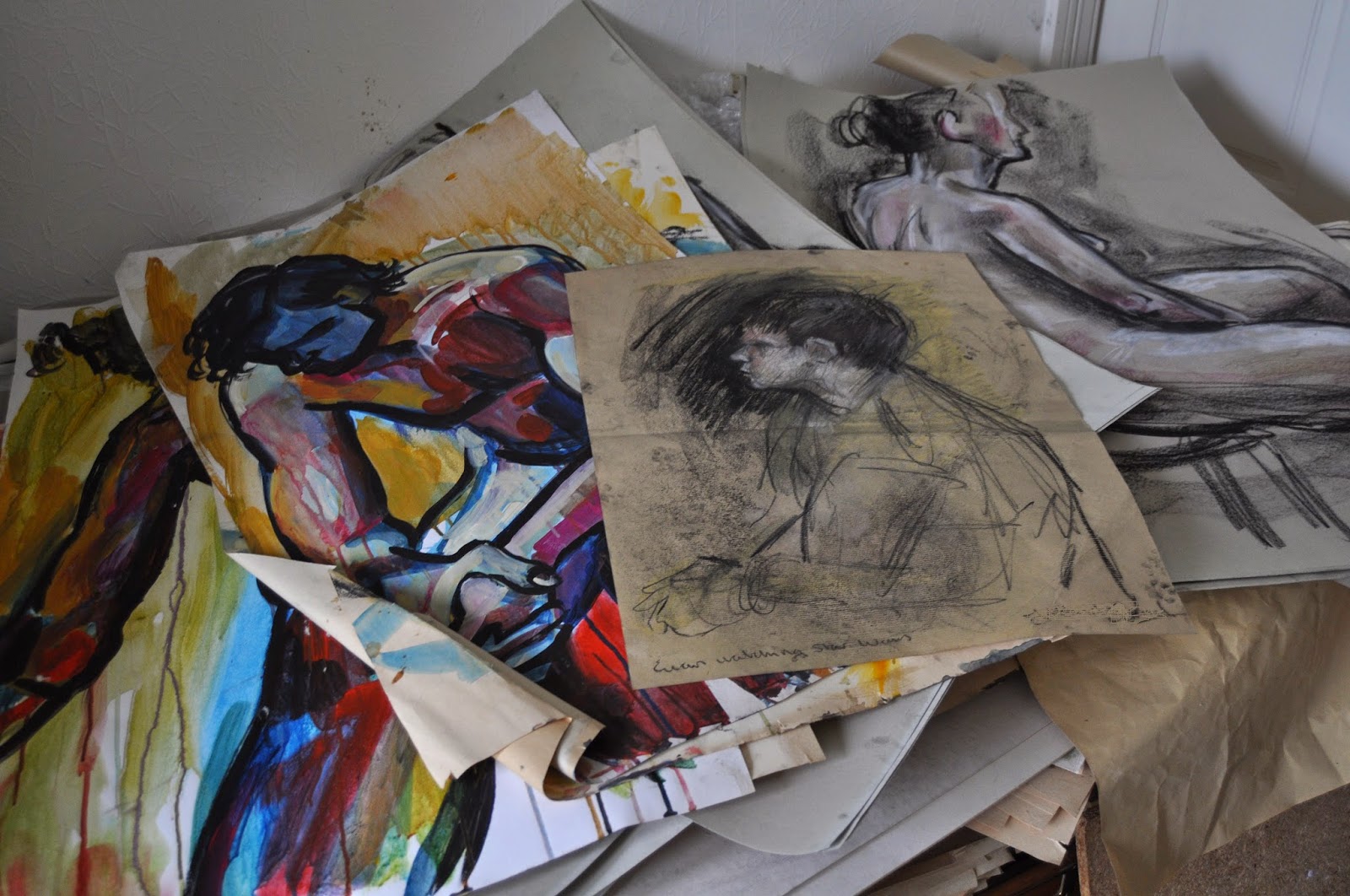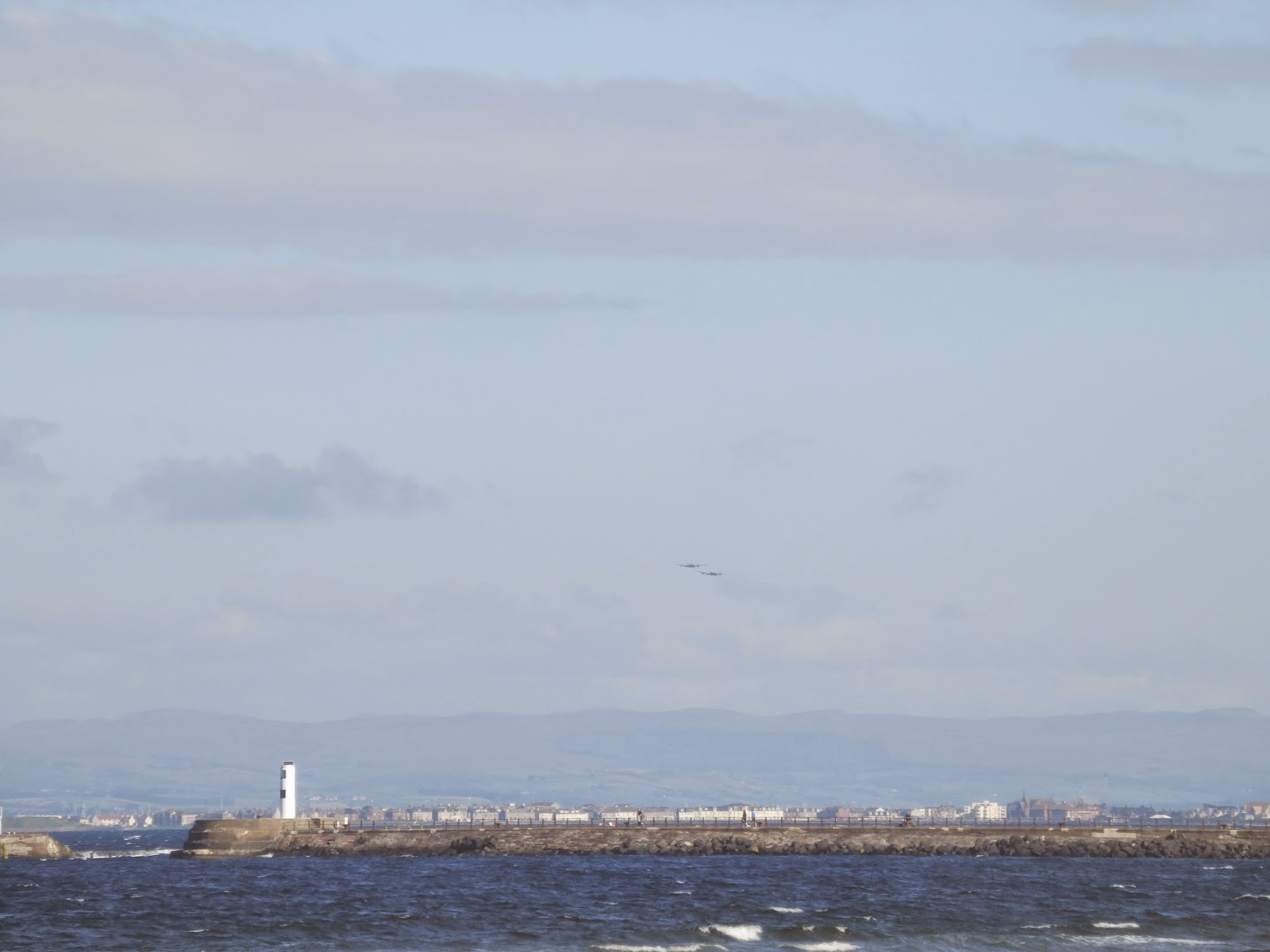At the start of what will be a defining week in the history of our country, I decided to take my son into town to see democracy in action on the streets. Always best to see history for yourself.
On the bus on the way in to town, we looked out for Yes and No posters in windows. We saw only 5 No posters. We saw a large Yes group at Queens Park, being tooted at by passing cars, plus a Yes volunteers shop.
In town, we walked down Buchanan Street, Argyle Street, George Square and Sauchiehall Street. Not having met a No supporter yet, I was keen to find someone to talk to and get some of their leaflets, and hopefully some sort of more detailed book or pamphlet of information which went beyond the leaflet which had come through my door saying 'we'll have the best of both worlds' accompanied by a graphs with dramatic plunging lines but no numbers on the x and y axis. Surely, with something this important, that wasn't too much to ask.
But even looking keenly, it was hard to find anyone from the No side at all.
There were any number of stands with various groups - Radical Independence, Greens for Yes, Yes groups for the NHS, women, anti-nuclear, business and so on. There were saltires flying, people wearing saltires, and everyone, but everyone, had Yes badges.
No-one was pushy or accosted me with anything, but everyone was friendly when I approached and spoke to them. I saw some people having quite animated debates in the street, but certainly no raised voices or shouting. There were pens, badges, hats, loads of literature from a leaflet to a book, and plenty of people willing to engage and discuss the contents. It was actually very heartening and uplifting to see so many people out on the streets, actually fired up with enthusiasm, speaking passionately about their beliefs.
Wish Tree, Buchanan Street, Glasgow (c) Photograph Libby Brooks
Eventually, I did find a No person. "Madam, can I put this on you?" offered the young man tentatively, trying to put a No Thanks sticker on my left breast. The right one already had a Yes sticker. Presumably that implied my cleavage was undecided. I asked if he had any booklets or information he could give me. He didn't, and then gave up with the sticker and walked off.
Now, in the polls, the No's are slightly ahead. There are around 10% undecided, So one in 10 of everyone - theoretically - walking past in Buchanan Street of voting age is a potential new vote for your side, whatever side that is, and every vote counts.
So I was actually genuinely taken aback that there wasn't an equal number of Yes's and No's. Where on earth are the No's? Why weren't you out there wearing your T-shirts, with booklets and badges and Union Jacks, shouting the pride in the UK from the rooftops? Why aren't you out there fighting with the same passion and enthusiasm as the Yes folk? Why weren't there huge numbers of groups, fired up with their years of being Better Together, out there singing the praises of the Union on the streets? Bankers Together, Capitalists for the Union, Pensioners for the Empire... I've no idea what, but being serious, why weren't there any sort of groups like the Yes groups? On the television it always looks like the No folk are packing the streets, fighting one on one with the Yes. The reality is very very different.
I did see, on close inspection, a handful of people with No badges. They weren't getting abuse or being intimidated, and neither were the No people with the stickers that I did manage to find. In fact, contrary to what you might read, I haven't heard abuse of any sort in the 2 years or so of the campaign.
So if it's 50-50, where is all the No stuff?? Why weren't you out there fighting for the votes? Why weren't you giving me your vision of the future?
There were a number of tourists excitedly taking photos, and people with suitcases who had obviously just arrived in Glasgow. If it was me arriving as a stranger, I would draw the conclusion that it looked like a 90% pro-independence win. It was a complete eye-opener.
Now, I guess the explanation for this is that Buchanan Street isn't a representative sample of the voting population. The ones out there on the street are the youngest, most energetic and enthused voters for change, whilst the elderly conservative No's are the invisible ones putting their feet up at home with a nice cup of tea. And that's it's easier to get fired up for a vision of future which has a goal, whether it be a greener, fairer, nuclear-free or socially more just goal, rather than a vision of the future where everything is just the same, thank you. But what kind of
stagnant backwater is that for our grandchildren?
Now, I don't know what's going to happen on the 18th of September And I certainly don't know what the 19th is going to be like. Because that's all in the future, and the future, whether Yes or No, is chocablock full of risks, the unknown, the uncertain, and the totally unexpected.
No-one ever knows all the answers or all the risks or all the facts, so there comes a point where you can't actually base your decision on facts, because the facts simply aren't there. Most of the facts haven't even happened yet. They're in the future. One path is as risky as the other.
So there comes a point where you can't go with logic and your head, you just have to go with your instinct and your heart. That's what it's there for. Trust it.
So that's my eyewitness on history, happening on my doorstep. Our fate, it seems, is in the hands of the silent - very, very silent - majority.
Or is it?












